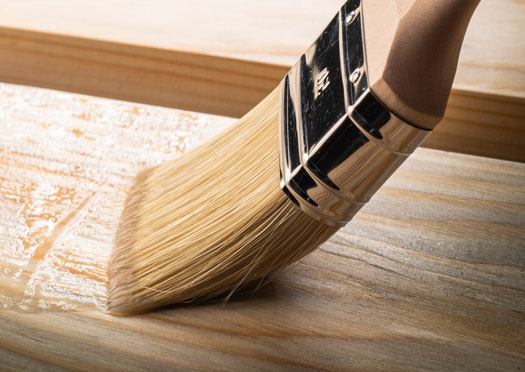Photooxidation and darkening of woods


Large scale glass facades and window fronts are popular architectural design elements. Likewise, the use of wood (flooring, furniture, etc.) indoors is increasing. As UV light with wavelengths of 330 to 380 nm passes through window glass, UV light can interact with the wood surface (especially lignin) and trigger chemical reactions (photooxidation). The result is severe, undesirable discoloration and color changes over time, as well as brittleness and wood erosion.
Current UV blocking coatings
In order to counteract the photooxidation and the related darkening of woods, indoor wooden elements such as floor coverings and furniture are often coated. These coatings typically contain pigments to protect the wood from UV light. However, one disadvantage is the loss of the natural appearance due to the highly opaque pigments. Another option is the use of transparent UV blocking additives, such as benzophenones, benzotriazoles or phenyltriazine derivatives. But these are classified as a health hazard. This is particularly problematic as they are volatile substances that can be absorbed through inhalation.
Our new innovation: Bio-based UV blocking coatings
As part of the ProTann project, Fraunhofer scientists have developed a sustainable wood protection coating made from natural substances that is harmless to health. This innovation closes the gaps in conventional products. The high-performance plant-based components identified in the project have a very good UV-blocking effect and excellent film formation on wooden surfaces. While tannins act as UV blockers, protein compounds support film formation.
Based on these results, we worked with Naturhaus Naturfarben GmbH to develop a modern coating system for interior wood surfaces. In the future, we plan to scale up this system on an industrial scale and improve its water resistance so that it can also be used outdoors.
Project term: |
2021 to 2025 |
Project management |
VDI/VDE Innovation + Technology GmbH |
Related Projects: |
 Fraunhofer Institute for Process Engineering and Packaging IVV
Fraunhofer Institute for Process Engineering and Packaging IVV